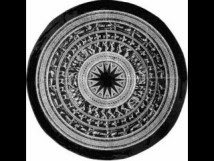 Located in Binh Thuan province, Phan Thiet is 200 km from Saigon and lies south of Cam Ranh bay on the southernmost stretch of Central Vietnam. Binh Thuan was once a part of the Cham kingdom. In 1692, Lord Nguyen Phuc Chu captured the area and named it Binh Thuan Dinh. Binh Thuan is quite important in Vietnam's history, as it was because of this area that in 1306 King Tran Nhan Tong agreed to the marriage of princess Huyen Chan to King Jaya Sinhavarman III of the Cham Kingdom. During the revolution against the French, it was in this area that the two patriots Phan Chu Trinh and Tran Quy Cap had their start. Furthermore, according to local lore, the area around Phan Thiet is where Han Mac Tu, the disfigured poet, spent his time forlornly as he waited for Mong Cam, the lady of his dreams.
Located in Binh Thuan province, Phan Thiet is 200 km from Saigon and lies south of Cam Ranh bay on the southernmost stretch of Central Vietnam. Binh Thuan was once a part of the Cham kingdom. In 1692, Lord Nguyen Phuc Chu captured the area and named it Binh Thuan Dinh. Binh Thuan is quite important in Vietnam's history, as it was because of this area that in 1306 King Tran Nhan Tong agreed to the marriage of princess Huyen Chan to King Jaya Sinhavarman III of the Cham Kingdom. During the revolution against the French, it was in this area that the two patriots Phan Chu Trinh and Tran Quy Cap had their start. Furthermore, according to local lore, the area around Phan Thiet is where Han Mac Tu, the disfigured poet, spent his time forlornly as he waited for Mong Cam, the lady of his dreams. Phan Thiet is the largest town in Binh Thuan province with an estimated population of close to 100,000 people. The town sits on the borders of Ca Ty river, is 20 Km from the ocean and swells with boats during the fishing season in the summer months. Fishing is Phan Thiet's largest industry. According to local statistics, some 100 different varieties of fishes are caught here with an annual yield of over 70,000 tons. As a result, Phan Thiet is famous for its Nuoc Mam (fish sauce), a seasoning used in Vietnamese cuisine.
Phan Thiet is the largest town in Binh Thuan province with an estimated population of close to 100,000 people. The town sits on the borders of Ca Ty river, is 20 Km from the ocean and swells with boats during the fishing season in the summer months. Fishing is Phan Thiet's largest industry. According to local statistics, some 100 different varieties of fishes are caught here with an annual yield of over 70,000 tons. As a result, Phan Thiet is famous for its Nuoc Mam (fish sauce), a seasoning used in Vietnamese cuisine.
Most visitors to Phan Thiet will notice the pungent odor that is associated with fish sauce production. This is a process where anchovy-like fishes are caught, cleaned and place in large vats of brine. The whole concoction is cured over a period of eight months to a year before the fish by-products are strained and the liquid is then diluted into less concentrated solutions to be bottled.

Fish sauce from Phan Thiet is available throughout Vietnam. Today, the annual production of nuoc mam in Phan Thiet is 16-17 million liters per annum. The salt used in the production of fish sauce is also a local product of Binh Thuan province. Although fishing is a big industry in Phan Thiet, it still remains a family business for many people in the region. While the men are out at sea, women and children often stay home to support the business by mending nets and tending to shore related chores.

With only a 10% humidity during most of the year, Binh Thuan is the dryest province in Vietnam. Most of its terrain consist of rocky mountains and sandy hills. Agriculture is almost non existent since few crops can grow on this arid land.

A few kilometers East of Phan Thiet are some of the most beautiful stretches of beaches in Vietnam. Some are lined with tall coconut trees, others lean against vast red sand dunes.

During the period between July and October, the fishing season is at its pinnacle in Phan Thiet as fishermen go out to sea. These boats form a magnificent display of lights at night and can be seen from shore. In fact, the scene is liken to a floating city by the locals.
Bai Rang

Bai Rang or Rang Beach is probably the most beautiful beach in Phan Thiet. It is located 15 Km northeast of Phan Thiet and is described by the locals as the beach that is nestled in the middle of a coconut palm forest. Other landmarks in the area of Rang beach are Da Ong Dia (boulders of the Earth God), and Suoi Tien (Celestial stream).
 Mui Ne Sand Dunes
Mui Ne Sand DunesHowever, by far the most popular among tourists are Mui Ne Sand Dunes and Mui Ne Beaches located 12 miles East of Phan Thiet. The sand dunes in this area are shaped by the elements of the wind and therefore is a spectacular site to the visitors.
Mui Ne Fishing Village

Mui Ne gets its name from the local fishermen using this area as a shelter during the stormy season. Mui meaning nose or peninsula and Ne meaning to duck or to take shelter. The combination of sun, sand and deep turquoise water of the pacific ocean create a breath taking and spectacular site to the visitors.









































